Stocking many Japanese ingredients in your pantry is not always an easy task to do. I get it because I receive lots of questions about substitutes for sake rice wine, mirin, soy sauce, rice vinegar, and potato starch substitute etc. So read on to discover all sorts of Japanese food substitutions in this post!
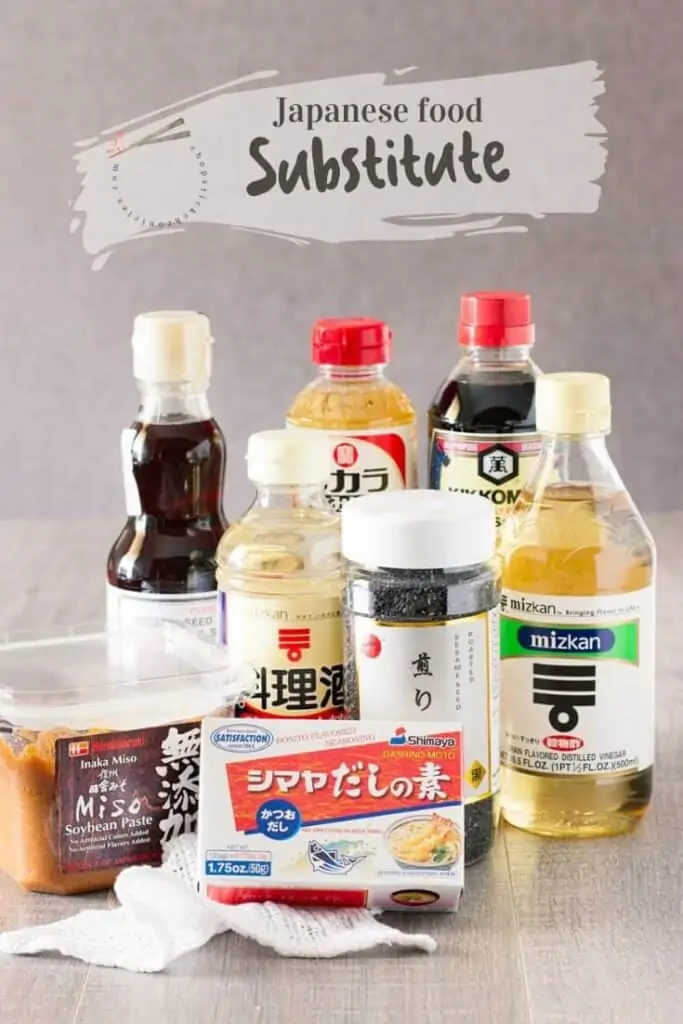
Condiment Substitutions
Check out which condiments to stock up on so that you can cook simple and authentic Japanese dishes any time in this previous post “5 Japanese essential seasonings and condiments“. Among those 5, these are the difficult ones to get: Sake, Mirin and Soy sauce.
Sake Substitute
Sake is a Japanese alcoholic beverage made from fermented rice. Apart from it being a well-known drink around the world, Sake is also an important condiment in Japanese cooking. This is because it adds delicate flavour and depth to dishes. If you can’t access Sake, it can be substituted with Dry Sherry or Chinese rice wine (Shaoxing Wine)
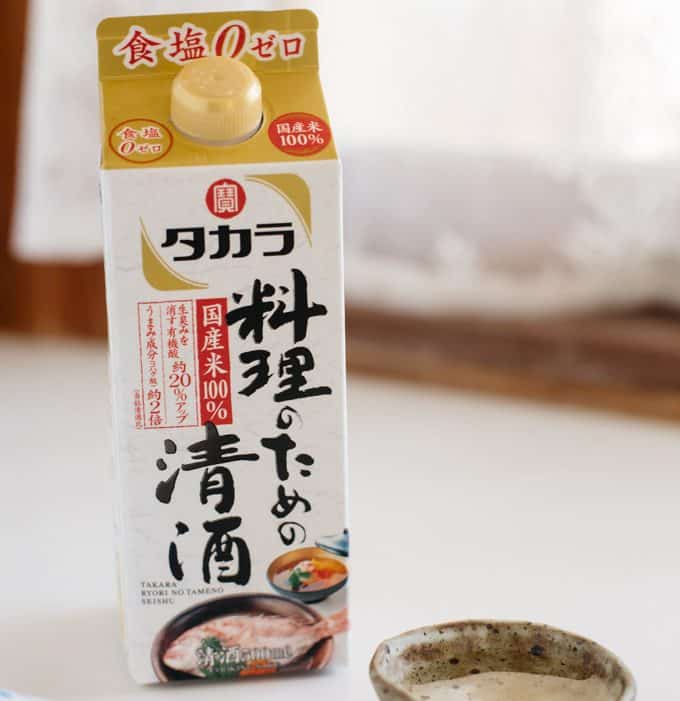
Mirin Substitute
Mirin is similar to sake made from fermented rice. It is however much sweeter and has a lower alcohol content. Mirin does not just add a rich and elegant sweetness to the dish but also eliminates unwanted odours like a fish smell. What can you possibly substitute mirin with? Don’t stress. The sweetness of Mirin is 1/3 of its sugar. So you can make up a mirin substitute with 1tbsp dry sherry + 1 tsp sugar.
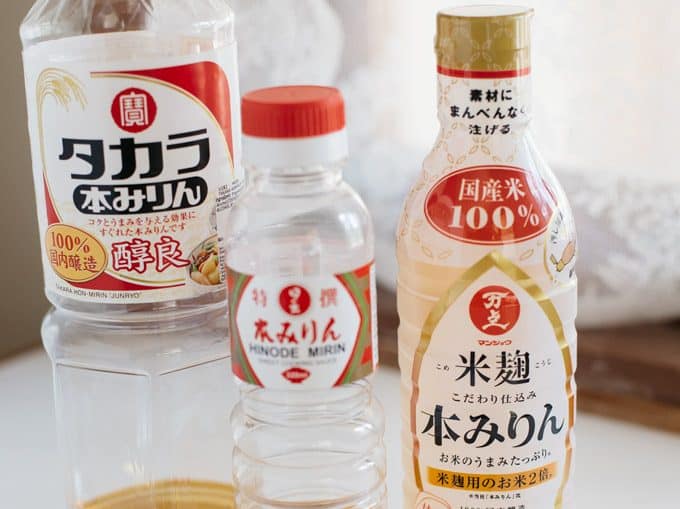
Soy Sauce (Syoyu) Substitute
Soy Sauce is a Japanese kitchen staple condiment made from fermented soybeans, wheat, salt and water. There are a few possible substitutions for Soy sauce.
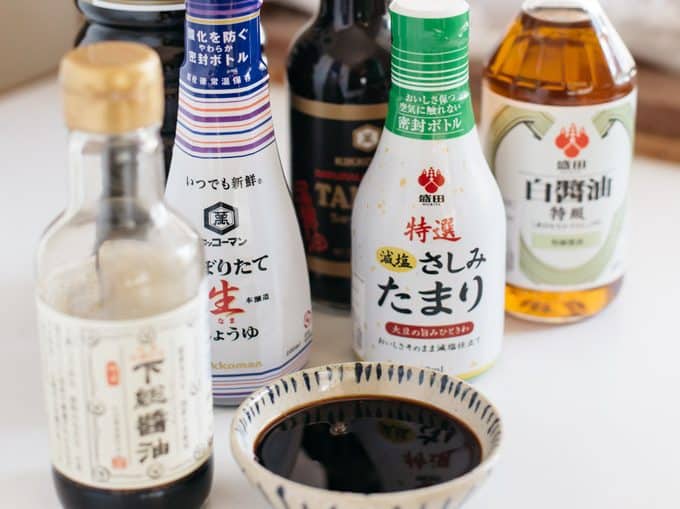
- Tamari is made from soybeans brewed in a similar way but without wheat. So it is gluten-free.
- Coconut Aminos
is a popular soy sauce substitute which is made from fermented coconut palm sap and it is also gluten-free.
- Liquid Aminos
also a substitute for soy sauce. It is made from soybeans but not fermented. Note that this is not gluten-free.
- For a homemade substitute, the recipe follows.
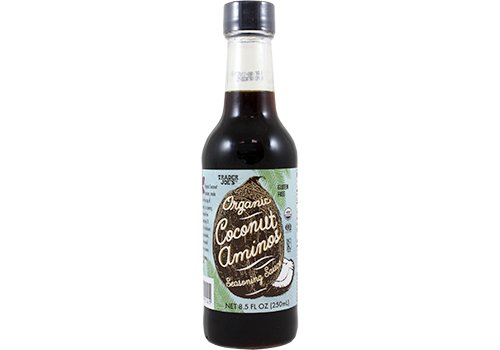
How to make homemade Soy sauce substitute
- Gather ingredients.
Gather 1 tsp Shiitake dashi, 1 tsp worcestershire sauce, 1/2 tsp salt, 1/8 ground ginger powder, 1/4 tsp honey.
- Combine all ingredients together.
Place all ingredients in a small mixing ball and combine them all together well.
Rice Vinegar Substitute
Rice Vinegar(known as “SU” in Japanese) is also a vital condiment in Japanese cooking. For example, it is used to make Sushi vinegar, Cucumber Sunomono and Chicken Nanban. Apple cider vinegar or White wine vinegar will substitute well for rice vinegar.
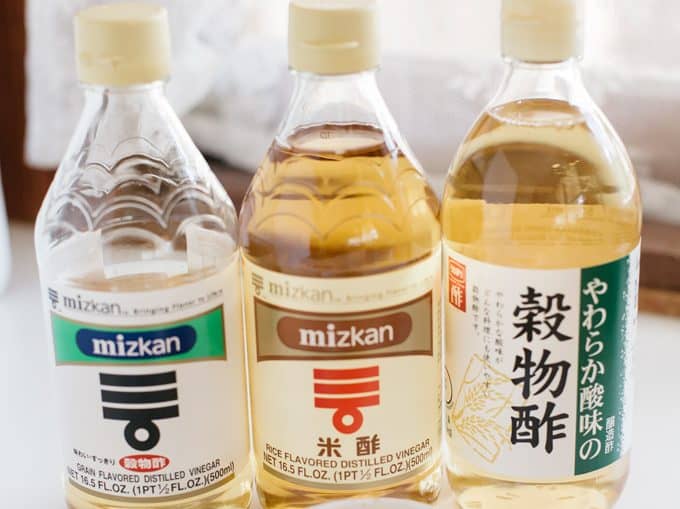
Potato Starch Substitute
Potato starch is known as “Katakuriko” and is used for thickening soup such as Egg Drop soup(Kakitama Jiru) and also for coating ingredients for deep frying like “Karaage” Japanese fried chicken. The best substitute for Potato starch is corn starch.
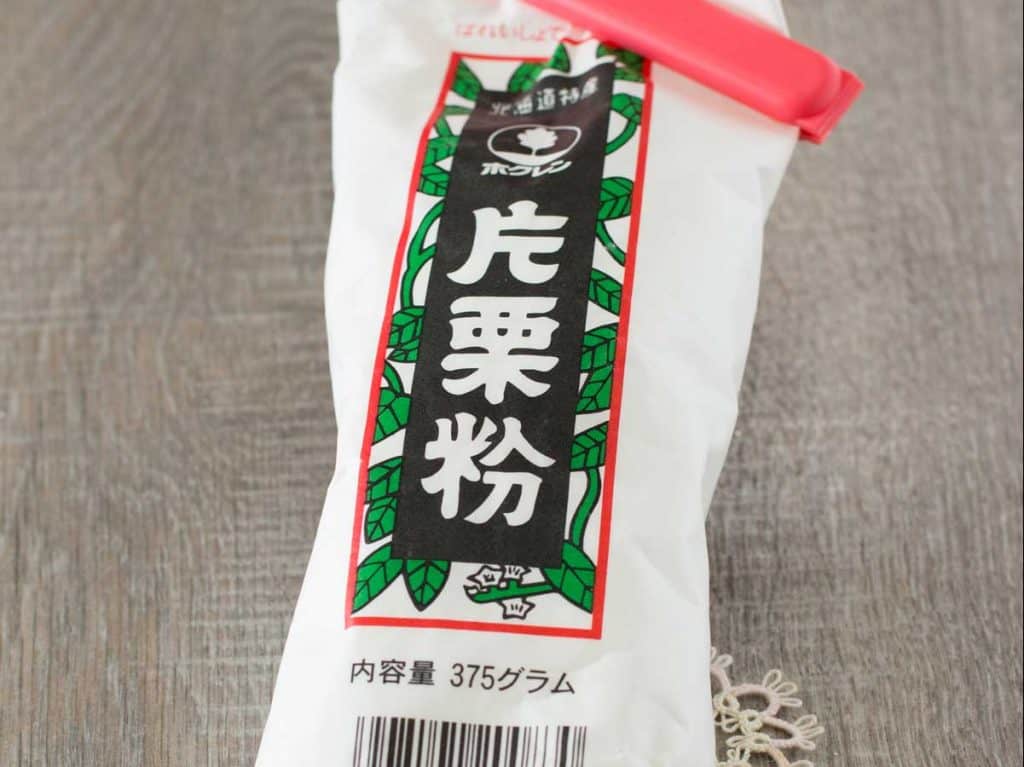
Shiratamako Substitute
Shiratamako (白玉粉) is a type of glutinous rice flour made from Mochigome (called sweet rice in English, even though it is not sweet), and is also known as sweet rice flour. It is used to make many Japanese sweets such as Mochi Ice Cream, Daifuku, Strawberry Daifuku, Mitarashi Dango, Three coloured Dango, Shiratama Dango and Yomogi Dango. Shiratamako can be replaced by Glutinous rice flour or Mochiko.
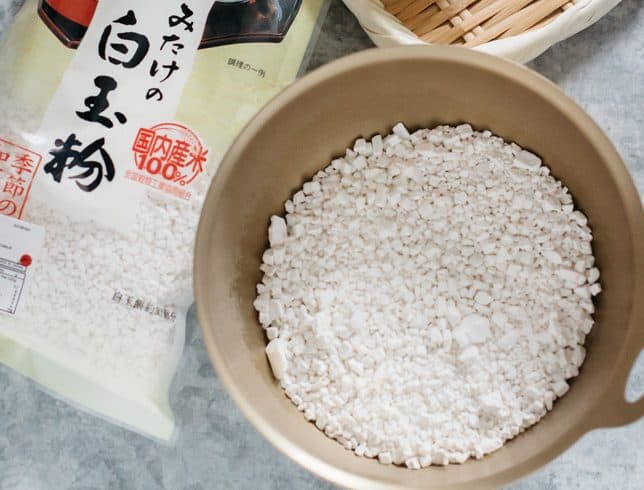
Japanese Ingredients Can Be DIY
There are Japanese pantry staple ingredients that can not be easily replaced but actually you can make them at home. They are Dashi, Miso, Panko Japanese bread crumb, Japanese Curry Roux and Japanese Mayo. Click these links for each recipe.
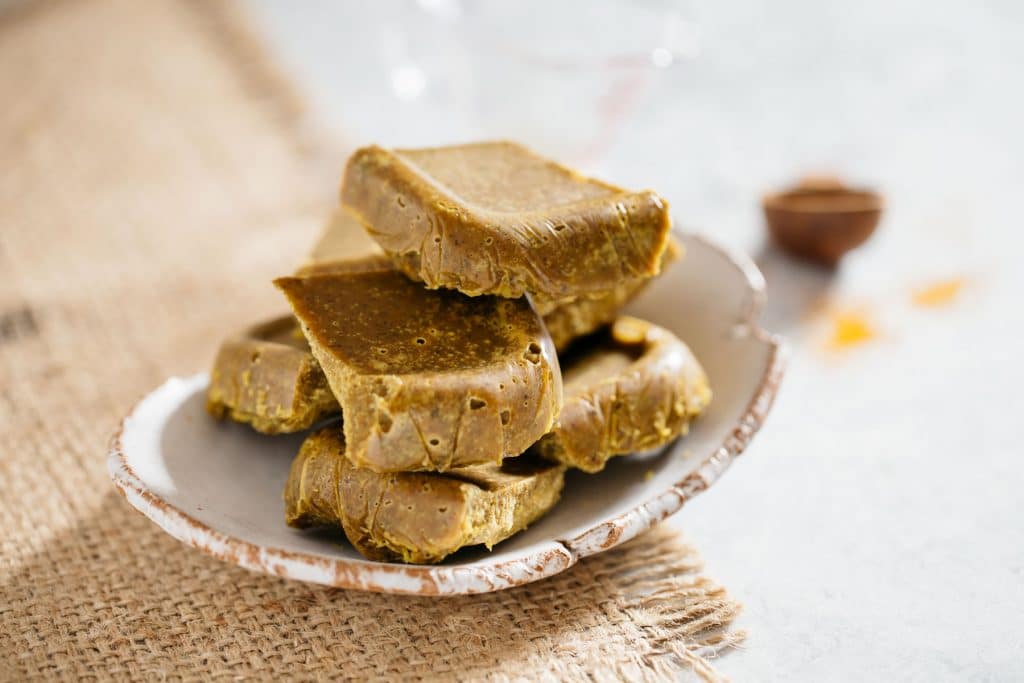
Japanese Herbs That You Can Grow
Furthermore, there are Japanese herbs and vegetables that you can grow easily at home. The following are herbs and vegetables typically used in Japanese cooking that I grow in my backyard in a small planter.
Mitsuba
Mitsuba is a Japanese herb often used as a garnish for Chawan mushi, soups, and donburi (rice bowl dishes). It is named after it’s shape of leaf – Mitsu (three) ba (leaves). Mitsuba comes in handy because of its distinctive refreshing aroma. It is easy to grow from seeds. Seed in spring in a half-shaded spot. Although it dies back in winter, it regrows itself in the same spot.
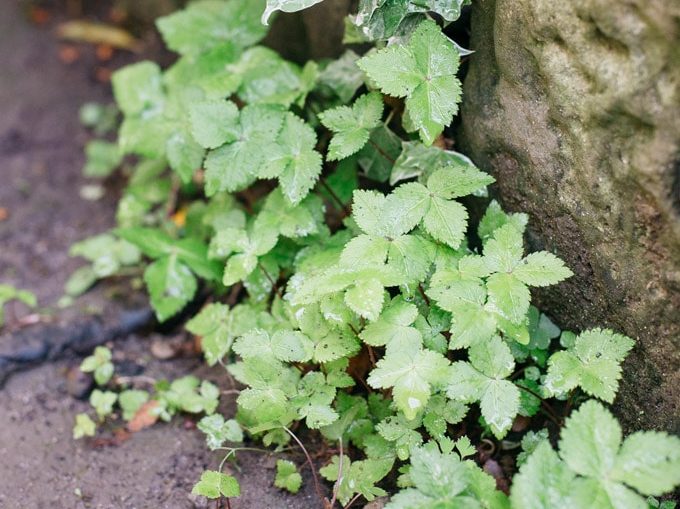
Mizuna
Mizuna is Japanese mustard green and belongs to the Brassica genus. It has dark green leaves and has a peppery bitter taste. It is commonly used in Salads – see Mizuna salad with miso dressings recipe.
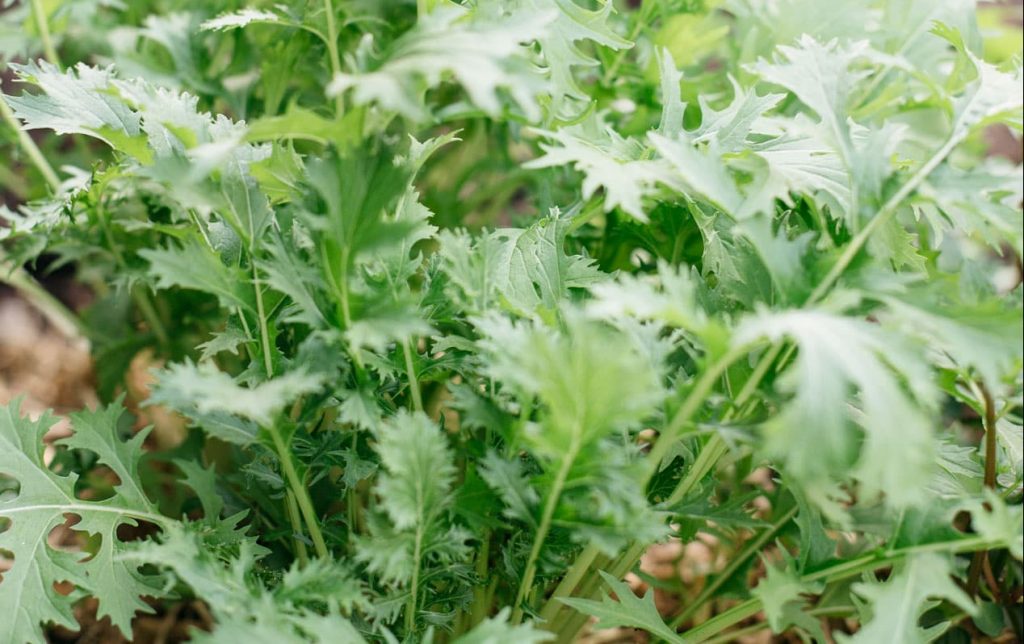
Shishito Peppers
Shishito peppers are a common vegetable in Japan and is my favourite. Japanese shishito peppers are finger-sized/shaped and wrinkly green pepper. They are not hot but are actually quite a sweet pepper, however, it is said that 1 in 10 of these peppers can be spicy hot. I have never seen fresh shishito peppers in Australia but I could buy a packet of seeds. I have successfully grown the Shishito peppers and cooked Konnyaku Steak with Shishito Peppers.
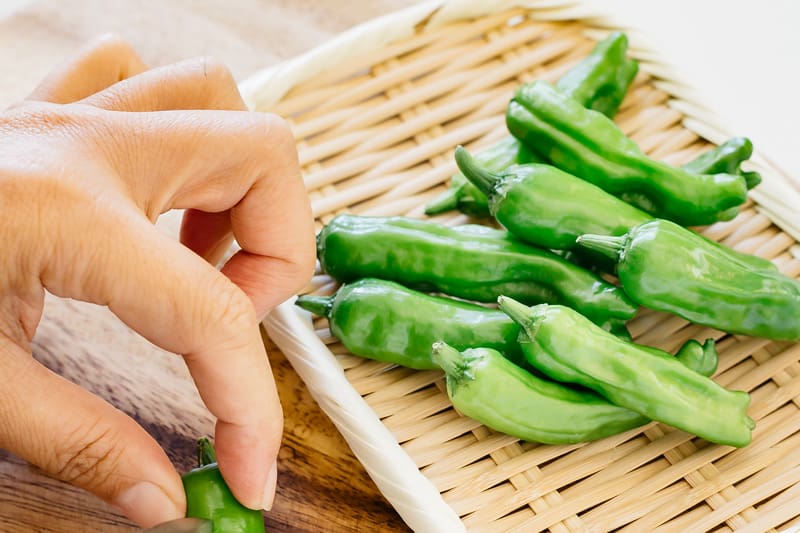
Shiso
Shiso is a perennial plant which belongs to the genus Perilla. It is bright green or purple in color and has a beautiful aroma. This is my favourite herb and I can not eat Temakizushi hand roll sushi without Shiso. Luckily I can buy it in a small pot like in the photo below from a local farmers market. It is very easy to grow in your backyard or in a small pot.
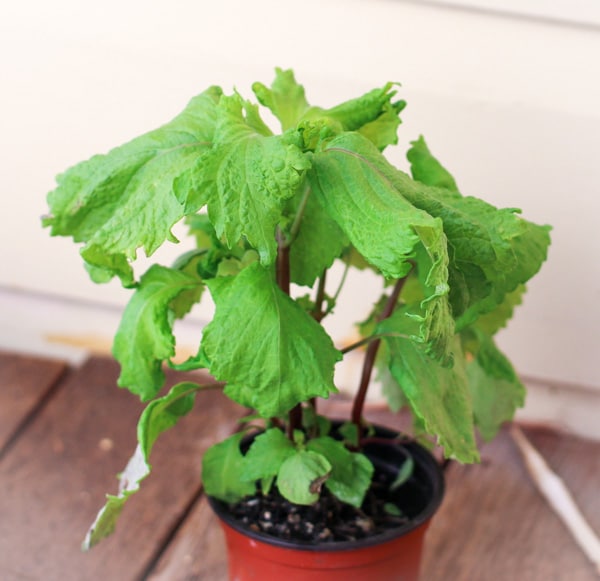
Yomogi
Yomogi is Japanese mugwort which is usually used for making “Yomogi dango” and “Kusa mochi” because of its natural aroma and beautiful green colour. It is perennial plant but its season “Shun” is from March to May. Only the fresh and new soft sprouts are used for cooking. It is growing naturally in Japan. Here in Australia, I bought mugwort in a little pot and now grow it in my backyard.
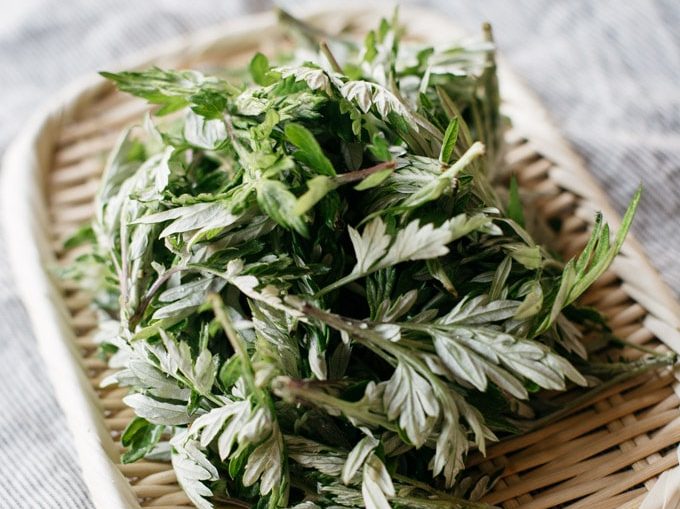
Stay Connected
If you like the recipe please rate the recipe and leave comments below. Also don’t forget to follow me on Youtube, Pinterest, Facebook, Twitter and Instagram. This way you keep up to date with all the latest happenings on Chopstick Chronicles. Don’t forget to Sign up for a weekly newsletter so you never miss out on new authentic delicious Japanese recipes! Sign up form is on the right-hand sidebar.
Chopstick Chronicles is a participant in the Amazon Services LLC Associates Program, an affiliate advertising program designed to provide a means for sites to earn advertising fees by advertising and linking to Amazon.com. As an amazon associate I earn from qualifying purchases.
Hi. I wonder have you ever heard of limoncello ( Italian lemon wine)? I have a bottle that I made my own and it also has the sweetness and tanginess. Therefore, could I use it as a substitute for mirin/sake? Thank you.
Hi Ana, Thank you for the leaving comment. I have never used limoncello but why not give it a try and let me know how it turned out. You never know, it could be delicious 😀
Hi.
I enjoy your posts.
I watch Liqui on you tube. I think that is her spelling.
I love the way she puts things together, finely chopped greens etc.
None of my books show this type of incorporation.
I would love to be able to make her type of food.
Thank you for your substitution post, as I live in the country, Japanese condiments are hard to find.
Also could you advise a nursery were I could obtain seeds or plants that you have named. Also Yuzi?
Hi Roy Thank you for the comment. The most seeds should be available from Amazon. I just posted about Shiso and I put a link to the seed from Amazon.
There is a grower of Shishito peppers at the Noosa Farmers market. Not sure if he goes to other markets on the sunshine coast or not. I have definitely seen him there in summer.
Hi Tania, Thank you for the information 😀
Yes! His name is Richard, and he’s at the West End markets more often than he is at the Noosa one.